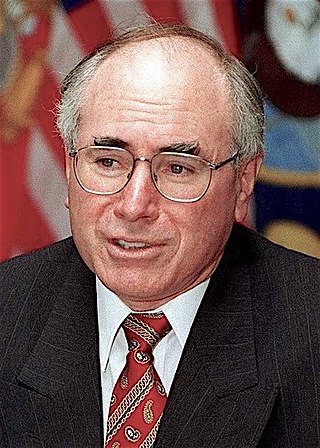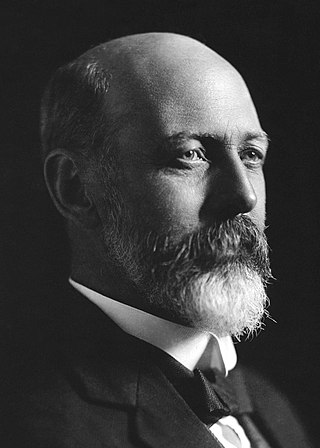Half-senate elections were held in Australia on 9 May 1953. 32 of the seats in the Senate were up for election. This was the first time a Senate election had been held without an accompanying election of the House of Representatives. The two election cycles fell out of synchronisation after the 1951 double dissolution. While the term of the House was not due to expire until 1954, a Senate election was due by 1 July 1953.
Although the Australian Labor Party won a majority of the contested seats, the Liberal-Country Coalition retained a majority of the overall seats in the upper house.
| Party | Votes | % | Swing | Seats won | Seats held | Change | ||
|---|---|---|---|---|---|---|---|---|
| Labor | 2,323,968 | 50.61 | +4.74 | 17 | 29 | +1 | ||
| Liberal–Country coalition | 2,039,938 | 44.43 | –5.27 | 15 | 31 | –1 | ||
| Liberal–Country joint ticket | 1,214,285 | 26.45 | –17.07 | 8 | N/A | N/A | ||
| Liberal | 825,653 | 17.98 | +11.81 | 7 | 26 | 0 | ||
| Country | N/A | N/A | N/A | N/A | 5 | –1 | ||
| Communist | 140,073 | 3.05 | +0.94 | 0 | 0 | 0 | ||
| Democratic | 40,109 | 0.87 | +0.87 | 0 | 0 | 0 | ||
| Henry George Justice | 13,590 | 0.30 | +0.16 | 0 | 0 | 0 | ||
| Tasmanian Labor | 8,990 | 0.20 | +0.20 | 0 | 0 | 0 | ||
| Independents | 24,921 | 0.54 | +0.03 | 0 | 0 | 0 | ||
| Total | 4,591,589 | 32 | 60 | |||||
A by-election, also known as a special election in the United States and the Philippines, a bye-election in Ireland, and a bypoll in India, is an election used to fill an office that has become vacant between general elections.

The 1996 Australian federal election was held to determine the members of the 38th Parliament of Australia. It was held on 2 March 1996. All 148 seats of the House of Representatives and 40 seats of the 76-seat Senate were up for election. The centre-right Liberal/National Coalition led by Opposition Leader John Howard of the Liberal Party and coalition partner Tim Fischer of the National Party defeated the incumbent centre-left Australian Labor Party government led by Prime Minister Paul Keating in a landslide victory. The Coalition won 94 seats in the House of Representatives, which is the largest number of seats held by a federal government to date, and only the second time a party had won over 90 seats at a federal election.

The 1952 United States Senate elections was an election for the United States Senate which coincided with the election of Dwight D. Eisenhower to the presidency by a large margin. The 32 Senate seats of Class 1 were contested in regular elections, and three special elections were held to fill vacancies. The Republicans took control of the Senate by managing to make a net gain of two seats. However, Wayne Morse (R-OR) became an independent forcing Republicans to rely on Vice President Richard Nixon's tie-breaking vote, although Republicans maintained a 48–47–1 plurality. Throughout the next Congress, Republicans were able to restore their 49–46–1 majority. This was the third time, as well as second consecutive, in which a sitting Senate leader lost his seat.

The 1984 Australian federal election was held in Australia on 1 December 1984. All 148 seats in the House of Representatives and 46 of 76 seats in the Senate were up for election. The incumbent Labor Party led by Prime Minister Bob Hawke defeated the opposition Liberal–National coalition, led by Andrew Peacock.

The 1906 Australian federal election was held in Australia on 12 December 1906. All 75 seats in the House of Representatives, and 18 of the 36 seats in the Senate were up for election. The incumbent Protectionist Party minority government led by Prime Minister Alfred Deakin retained government, despite winning the fewest House of Representatives votes and seats of the three parties. Parliamentary support was provided by the Labour Party led by Chris Watson, while the Anti-Socialist Party, led by George Reid, remained in opposition.

The 1980 Australian federal election was held in Australia on 18 October 1980. All 125 seats in the House of Representatives and 34 of the 64 seats in the Senate were up for election. The incumbent Liberal–NCP coalition government, led by Prime Minister Malcolm Fraser, was elected to a third term with a much reduced majority, defeating the opposition Labor Party led by Bill Hayden. This was the last federal election victory for the Coalition until the 1996 election.

The 1977 Australian federal election was held in Australia on 10 December 1977. All 124 seats in the House of Representatives and 34 of the 64 seats in the Senate were up for election.

The 1975 Australian federal election was held in Australia on 13 December 1975. All 127 seats in the House of Representatives and all 64 seats in the Senate were up for election, due to a double dissolution.

The 1974 Australian federal election was held in Australia on 18 May 1974. All 127 seats in the House of Representatives and all 60 seats in the Senate were up for election, due to a double dissolution. The incumbent Labor Party led by Prime Minister Gough Whitlam defeated the opposition Liberal–Country coalition led by Billy Snedden. This marked the first time that a Labor leader won two consecutive elections.

The 1969 Australian federal election was held in Australia on 25 October 1969. The incumbent Liberal–Country coalition government, led by Prime Minister John Gorton, won the election with a severely diminished majority over the opposition Labor Party, led by Gough Whitlam despite losing the two party popular vote. Both major parties had changed their leaders in the run-up to the election, the first time this had occurred since 1946. The victory was the ninth consecutive general election won by the Coalition, and remains the record number of consecutive terms won by any Australian Federal Government.

The 1951 Australian federal election was held in Australia on 28 April 1951. All 121 seats in the House of Representatives and all 60 seats in the Senate were up for election, due to a double dissolution called after the Senate rejected the Commonwealth Bank Bill. The incumbent Liberal–Country coalition led by Prime Minister Robert Menzies defeated the opposition Labor Party led by Ben Chifley with a modestly reduced majority, and secured a majority in the Senate. This was the last time the Labor party ever held a Senate majority. Chifley died just over a month after the election. This was the sixth and last federal election prior to the death of George VI a year later.

The 1949 Australian federal elections was held on Saturday December 10, All 121 seats in the House of Representatives and 42 of the 60 seats in the Senate were up for election. The incumbent Labor Party, led by Prime Minister Ben Chifley, was defeated by the opposition Liberal–Country coalition under Robert Menzies in a landslide. Menzies became prime minister for a second time, his first period having ended in 1941. This election marked the end of the 8-year Curtin-Chifley Labor government that had been in power since 1941 and started the 23-year Liberal/Country Coalition government. This was the first time the Liberal party won government at the federal level.

The 1913 Australian federal election was held in Australia on 31 May 1913. All 75 seats in the House of Representatives, and 18 of the 36 seats in the Senate were up for election. The incumbent Labor Party, led by Prime Minister Andrew Fisher, was defeated by the opposition Commonwealth Liberal Party under Joseph Cook, marking the second time an Australian Prime Minister was defeated at an election. The new government had a majority of just a single seat, and held a minority of seats in the Senate. It would last only 15 months, suffering defeat at the 1914 election.

The 1910 Australian federal election was held in Australia on 13 April 1910. All 75 seats in the House of Representatives, and 18 of the 36 seats in the Senate were up for election. The incumbent Liberal Party led by Prime Minister Alfred Deakin was defeated by the opposition Australian Labor Party (ALP) led by Andrew Fisher.
This is a list of members of the Australian Senate from 1953 to 1956. Half of its members were elected at the 28 April 1951 election and had terms deemed to start on 1 July 1950 and finishing on 30 June 1956; the other half were elected at the 9 May 1953 election and had terms starting on 1 July 1953 and finishing on 30 June 1959.
This is a list of members of the Australian Senate from 1951 to 1953. The 28 April 1951 election was a double dissolution called by Prime Minister of Australia Robert Menzies in an attempt to gain control of the Senate and to pass the Commonwealth Bank Bill, if necessary at a joint sitting of both houses. All 121 seats in the House of Representatives, and all 60 seats in the Senate were up for election. The incumbent Liberal Party of Australia led by Menzies with coalition partner the Country Party led by Arthur Fadden defeated the Australian Labor Party led by Ben Chifley and gained control of the Senate with 32 seats to Labor's 28.
This is a list of members of the Australian Senate from 1 July 1950 to 28 April 1951. The Senate was expanded from 36 to 60 seats as a result of legislation passed in 1948, which came into effect on 22 February 1950. The membership of the newly expanded Senate broke down as follows:
This is a list of members of the Australian Senate from 1 July 1947 to 30 June 1950. Half of its members were elected at the 21 August 1943 election and had terms starting on 1 July 1944 and finishing on 30 June 1947; the other half were elected at the 28 September 1946 election and had terms starting on 1 July 1947 and finishing on 30 June 1953.

The 1840–41 United States Senate elections were held on various dates in various states. As these U.S. Senate elections were prior to the ratification of the Seventeenth Amendment in 1913, senators were chosen by state legislatures. Senators were elected over a wide range of time throughout 1840 and 1841, and a seat may have been filled months late or remained vacant due to legislative deadlock. In these elections, terms were up for the senators in Class 2.

The South Australian Liberal Party, officially known as the Liberal Party of Australia (South Australian Division), and often shortened to SA Liberals, is the South Australian Division of the Liberal Party of Australia. It was formed as the Liberal and Country League (LCL) in 1932 and became the South Australian Division of the Liberal Party when the Liberal Party was formed in 1945. It retained its Liberal and Country League name before changing to its current name in 1974. It is one of two major parties in the bicameral Parliament of South Australia, the other being the Australian Labor Party (SA Branch). The party has been led by Leader of the Opposition David Speirs since the 2022 state election after a one-term government.